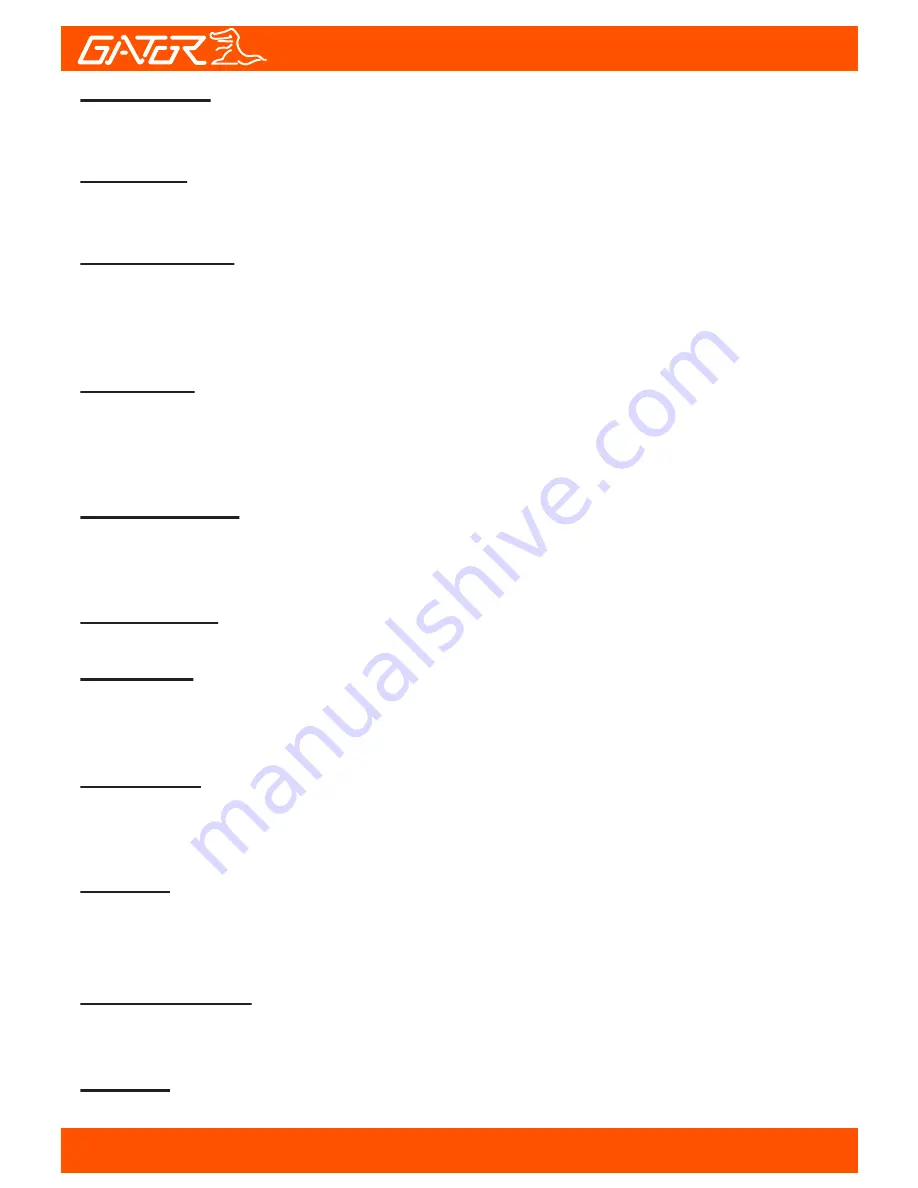
Date Stamp:
This feature will stamp the date and time on all your footage produced by
your Dash Cam.
G Sensor:
This feature allows you to set the sensitivity of the Gravity sensor in the Dash
Cam. We recommend this be set to ‘4G’ to help stop false or irrelevant readings.
Parking Mode:
When enabled, the Dash Cam will automatically turn on and start recording
when it detects a impact against the car when parked. A ‘P’ icon appears on
the screen when on. Settings are 2G, 4G & 8G for sensitivity. We recommend
8G (less sensitive) for false triggers.
Beep Sound:
Allows you to turn the beeping sound on or off.
Date/Time:
This feature will allow you to change the year, month, day and time. To change
the date simply use the arrow keys to go up or down. Press the OK button to
move onto the next section. Again, use the arrow buttons to go up or down.
Once through all the sections, pressing OK again will finish the setup.
Language:
Allows you to choose from a selection of languages that include: English,
French, Spanish, Dutch, Italian, Simplified Chinese, Traditional Chinese,
Russian, Japanese, Korean and Czech.
Frequency:
This feature allows the best recording in conditions where street lights and
ac lighting is used. The Australian standard frequency is 50HZ so it should
be set to ‘50hz’.
Screen savers:
This feature will turn your LCD off after 1, 3 or 5 minutes but will continue to
record regardless. This feature is useful for night driving as having the LCD
on could be a distraction.
Format:
This feature allows you to format/delete all the files off your micro SD card
and also reinstalls your DCIM directory and Dash Cam software on your SD
card so the micro SD card can operate with your Dash Cam free of errors.
Default Setting:
This feature will reset all your settings and return your Dash Cam to the factory
standard settings.
Version:
This simply shows the firmware/software employed by the Dash Cam’s hardware.
11




































